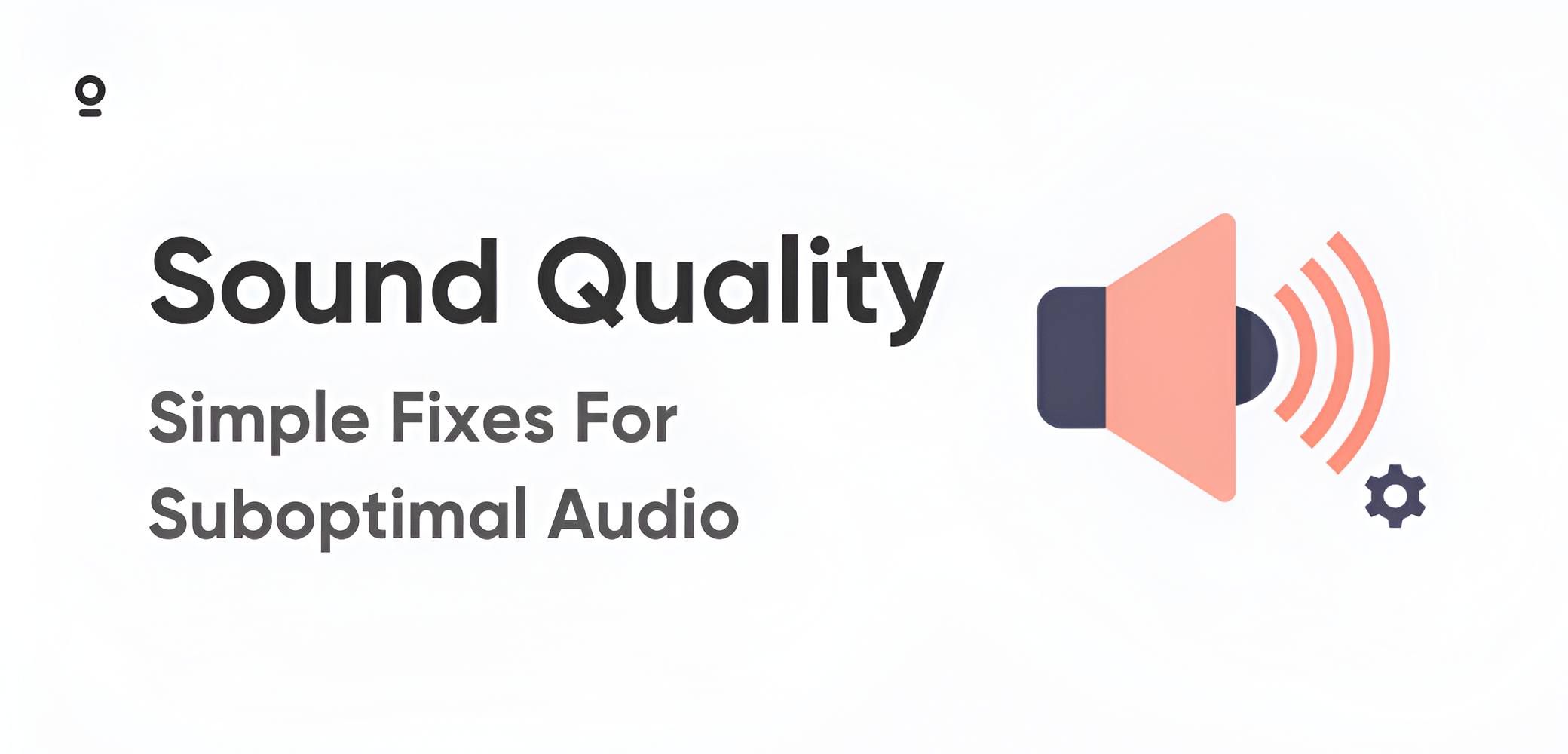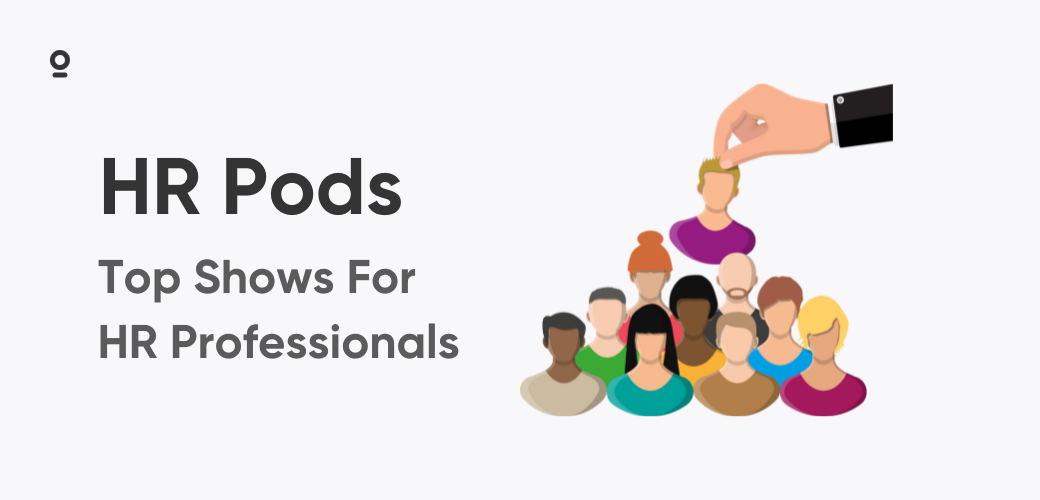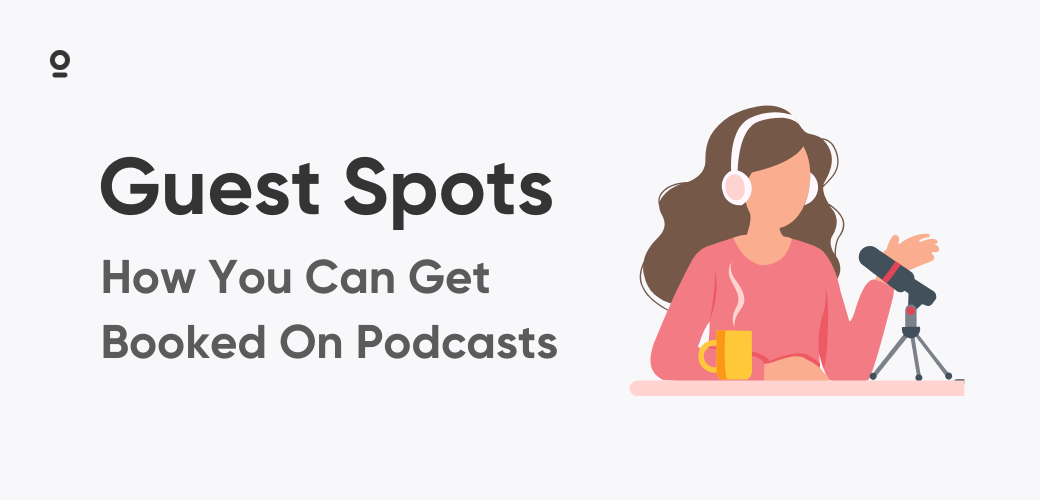If you've ever struggled through a podcast episode plagued by background noise or harsh echoes, you know how quickly listeners can lose interest. When you focus on maintaining optimal sound quality, your audience can stay immersed in your content without audio distractions. They'll be more likely to hear (and trust) your message instead of tuning out.
In this post, we'll explore why clear, consistent audio matters so much for your show's growth. You'll find tips on setting up your recording environment, choosing and positioning a microphone, and ensuring everyone follows good mic technique. We'll also highlight how Zencastr's local recording approach makes it easier to capture professional audio—even when you and your guests aren't in the same room. Let's dive in.
Why Sound Quality Matters for Your Show
Clear audio does more than make you sound polished. It shows respect for your listeners' time and helps build credibility. When your voice is easy to understand, your audience can absorb the information you're sharing without straining or getting annoyed by distracting noises.
Quality sound also reflects your commitment to providing value. If your show sounds professional, listeners will feel more confident about recommending it to friends, leaving positive reviews, and coming back for future episodes.
Set the Stage: Your Recording Environment
A key part of maintaining optimal sound quality is choosing a space that naturally minimizes echoes and background noise. You don't need an expensive studio; you just need to be smart about your surroundings.
- Avoid hard surfaces: Bare walls and floors cause sound reflections. Soft items like couches, rugs, or curtains can reduce echoes.
- Pick a small, furnished room: A bedroom or walk-in closet often works better than large open spaces. Clothes and upholstery absorb sound effectively.
- Reduce external noise: Turn off air conditioners or close windows if traffic noise is an issue. Even small steps make a noticeable difference in your recordings.
Microphone Choice: Keep It Simple
You don't need a top-of-the-line microphone to sound good. Many podcasters start with affordable USB mics like the Audio-Technica ATR2100x-USB or Samson Q2U. What really matters is using a mic specifically designed for speech rather than relying on a built-in laptop mic or gaming headset.
- Positioning: Place your mic about 4–6 inches from your mouth, slightly off to one side to reduce "popping" sounds.
- Pop Filter or Windscreen: These attachments help tame plosives (the sudden burst of air when pronouncing Ps and Bs).
- Consistent placement: Try to stay in the same position while recording, so your volume doesn't fluctuate.
Microphone Filters: A Worthwhile Upgrade
One of the simplest ways to capture cleaner audio is by using a microphone filter right at the source. These affordable accessories control plosive energy before it hits the mic, preventing the harsh popping sounds you might otherwise have to edit out later. You have several effective options:
- Nylon Mesh Filters: These common circular screens diffuse sound as it passes through the mesh, effectively reducing plosives while maintaining audio clarity.
- Metal Mesh Filters: More durable than nylon, these deflect sound waves downward and away from the microphone, providing excellent plosive reduction with minimal sound coloration.
- Microphone Windscreens: These foam covers slip directly over your microphone to break down sound before it enters. They help protect against breath noise and mild environmental interference, making them ideal for handheld mics or recording in slightly windy conditions, though they may slightly muffle higher frequencies.
If you're recording outside or on location, a quality windscreen can also keep breath noise and slight wind interference at bay while still allowing clear voice transmission.
Many podcasters overlook this step and end up spending hours in post-production trying to fix unwanted noises. A quick setup with a proper mesh filter or microphone windscreen can spare you that headache, allowing you to focus on creating engaging content instead of cleaning up messy audio.
Record Better with Zencastr
When you record remote interviews, typical video conferencing software compresses the audio as it travels over the internet. That's why so many podcasts have that "underwater" or tinny sound when guests speak. Zencastr fixes this by recording each participant locally on their own device, then uploading full-quality audio afterward.
- No internet audio degradation: Your files aren't compressed mid-call.
- Separate tracks for each speaker: You can adjust volume levels or edit out background noise from one person without affecting the others.
- User-friendly guest experience: Your guests just click a link to join. No specialized software or additional downloads.
For podcasters weighing their options, understanding the differences between free and premium podcast recording software can help you make the right choice for your specific needs.
Before You Hit Record
Small pre-checks can save you a lot of frustration once you're rolling:
- Mic connected and recognized? Double-check your recording software sees the correct device.
- Headphones on: Headphones prevent your speakers from leaking sound back into the mic.
- Basic mic technique reminder: Encourage guests to speak consistently close to their mic and avoid tapping desks or shuffling papers.
- Volume levels: Do a quick test to confirm everyone's volume is similar, so no one is too loud or too soft.
Headphones Are Non-Negotiable
Skipping headphones is one of the most common (and easiest to fix) mistakes. Without them, your voice may echo back through your guest's speakers, creating an effect that's tough to remove in editing. Any headphones will help, but over-ear models isolate your ears better so you don't hear room noise.
Mic Technique Matters More Than Mic Quality
Paying attention to small details can go a long way toward maintaining optimal sound quality. Even with a pricey microphone, simple oversights can sabotage your audio:
- Consistent distance: Stay about 4–6 inches away. Closer than that can cause distortion; farther risks capturing room echoes.
- Minimal movement: Shifting around changes volume levels and can be distracting for listeners.
- Hands-free: Use a mic stand to avoid handling noise.
- Quiet surroundings: Remember to silence phones and shut off noisy fans or air conditioners.
Let Zencastr's Smart Tools Do the Work
Even if your recording technique is solid, post-production can bring your podcast to the next level. Zencastr includes built-in tools that simplify advanced processes:
- Noise Reduction: Filters out background sounds while preserving vocal clarity.
- Loudness Normalization: Keeps volume levels consistent across your entire episode.
- Smart Filters: Automatically remove filler words and extended silences, making editing faster and more efficient.
By automating these tasks, you can focus on refining content instead of troubleshooting audio every step of the way.
Common Pitfalls to Avoid
Seasoned hosts know even small missteps can detract from a listener's experience:
- Recording in a busy location: Coffee shops or open offices often introduce unavoidable background chatter.
- Using laptop mics: Built-in microphones usually produce thin, echoey sound.
- Inconsistent mic placement: Regularly shifting positions leads to volume spikes and dips.
- Excessive editing: Over-processing audio can result in a robotic or muffled tone. A light touch maintains a natural sound.
These common pitfalls can be especially challenging when you're new to podcast recording software. With the right approach, you can avoid these issues from the start.
Create a Pre-Recording Checklist
Routine is your best friend. Here's a quick rundown:
- Confirm mic selection (not the built-in laptop mic).
- Place a pop filter or foam windscreen if you have one.
- Wear headphones, and ensure guests do the same.
- Choose a quiet spot and run a short test recording.
Make this part of your standard workflow, and you'll find it much easier to consistently deliver clear audio.
Sound Better, Grow Faster
Ultimately, maintaining optimal sound quality helps your show stand out in a crowded podcast landscape. When people hear crisp, balanced voices, they're more likely to keep listening and share your episodes with others. It also builds trust—clear audio signals you care about delivering a high-quality experience.
Of course, technical quality only takes you so far. A strong podcast interview process ensures your content is as compelling as your audio is clear.
If you're ready for a practical solution that streamlines your entire recording process, give Zencastr a try. Whether you're hosting solo, chatting with a co-host, or interviewing guests across the globe, Zencastr's platform ensures great results without requiring a deep technical background. Start your next episode using Zencastr's local recording feature, add a microphone filter if you don't already have one, and see just how big of a difference it can make.







